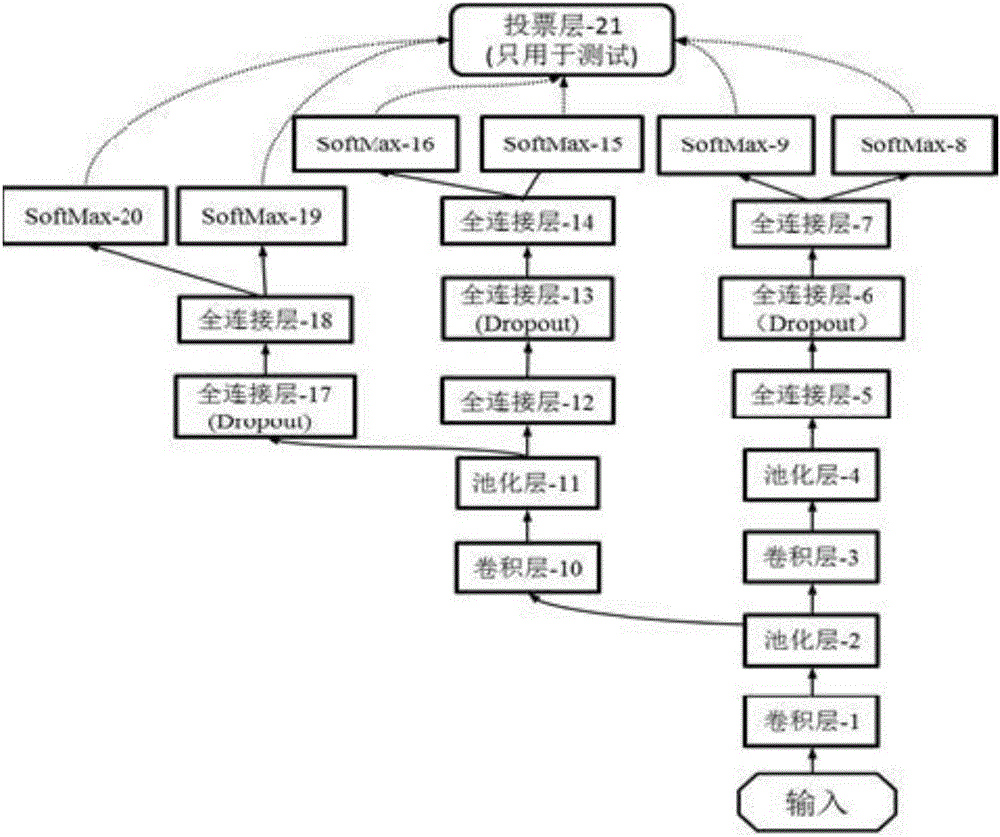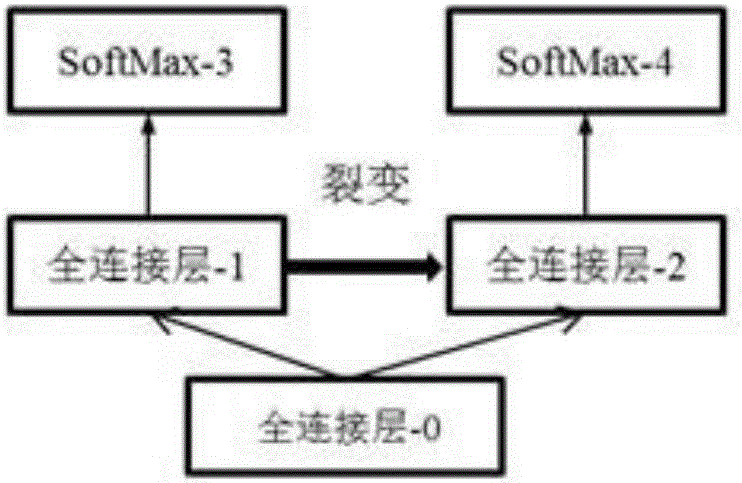Construction method of deep neural network
A deep neural network and construction method technology, which is applied in neural learning methods, biological neural network models, neural architectures, etc. The effect of avoiding convergence interference
- Summary
- Abstract
- Description
- Claims
- Application Information
AI Technical Summary
Problems solved by technology
Method used
Image
Examples
Embodiment
[0026] We propose a new deep neural network architecture named "Fissionable Deep Neural Network". The network structure includes multiple branches sharing parameters and multiple Softmax classifiers; and during training, the structure of the entire network changes dynamically until the entire network structure is split into multiple models.
[0027] The fissile deep neural network structure is a tree structure with shared parameters, such as figure 1 As shown, the whole structure includes input layer, convolution layer, pooling layer, fully connected layer, SoftMax layer and voting layer. The connection between each layer is carried out through data transfer. The root node is the data input layer, all leaf nodes are the Softmax layer, and the voting layer is only used during testing. The numbers following the names of each layer are just to better distinguish each layer and have no other meaning. The path from the root node to a certain leaf node is a neural network with a l...
PUM
 Login to View More
Login to View More Abstract
Description
Claims
Application Information
 Login to View More
Login to View More - R&D
- Intellectual Property
- Life Sciences
- Materials
- Tech Scout
- Unparalleled Data Quality
- Higher Quality Content
- 60% Fewer Hallucinations
Browse by: Latest US Patents, China's latest patents, Technical Efficacy Thesaurus, Application Domain, Technology Topic, Popular Technical Reports.
© 2025 PatSnap. All rights reserved.Legal|Privacy policy|Modern Slavery Act Transparency Statement|Sitemap|About US| Contact US: help@patsnap.com



